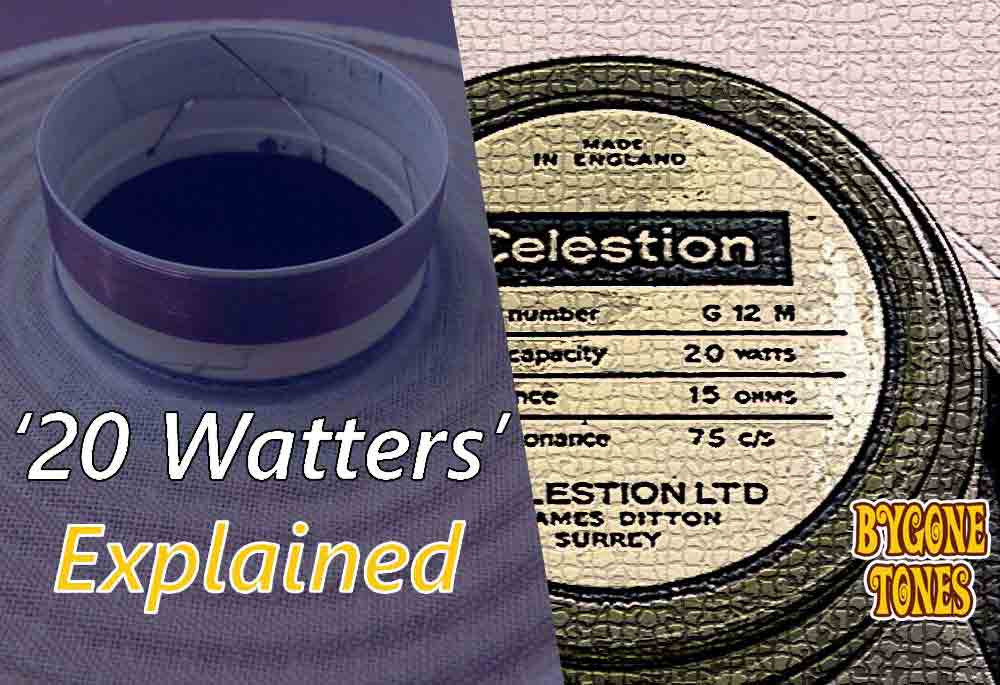
The Celestion greenback 20 watt G12M and 25 watt G12H are some of the most sought after pre-rola speakers. However it is easy to be fooled by the labels on these speakers, everything is not always as it seems.
Here I’ll give a quick overview of the main differences between the 20 watt and 25 watt G12M (and equivalent G12H), and how to identify the imposters with the deceiving labels on them!
Overview
When Celestion first introduced the greenback range in the mid 1960’s, the G12M only had a power handling of 20 watts and the G12H only had a power handling of 25 watts.
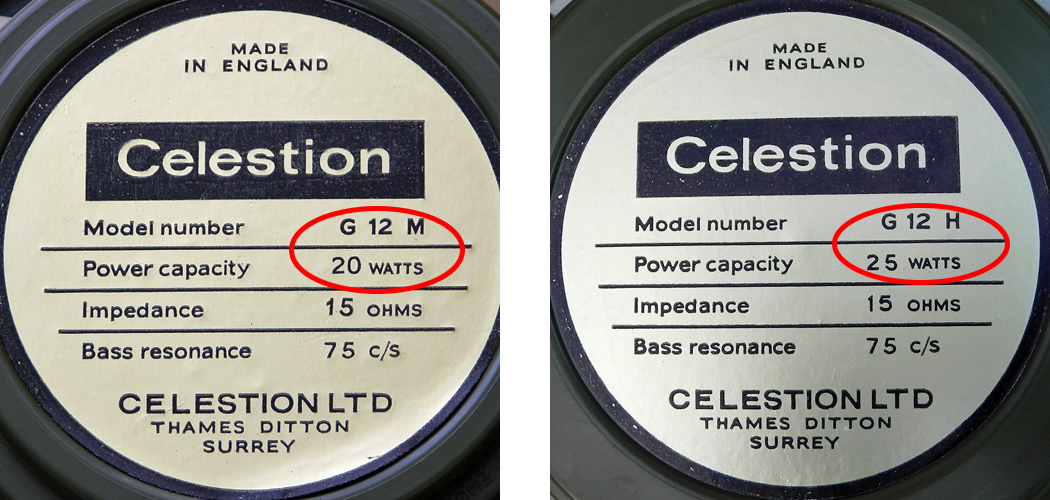
In late 1967 Celestion upgraded the voice coils across all speaker models to allow for roughly 5 watts more power handling. This gave us the familiar 25w G12M and 30w G12H – and we can assume the alnico speakers also increased from 15w to 20w (or 17w to 22w according to some sources).
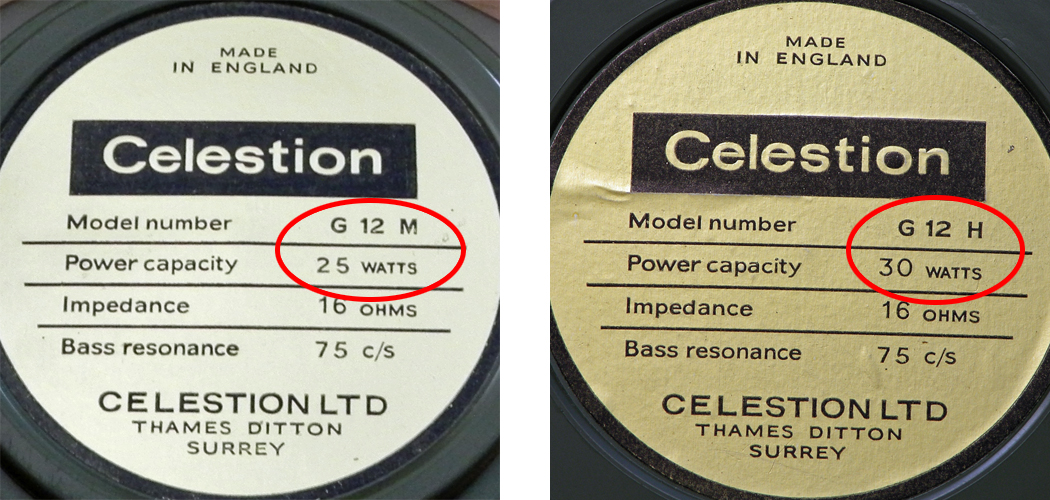
Difference in voice coils
The “5w less” speakers had a white coloured voice coil former. These speakers are known to struggle with their rated power handling.
The “5w more” speakers had a brown coloured voice coil former, made from a more heat resistant material.
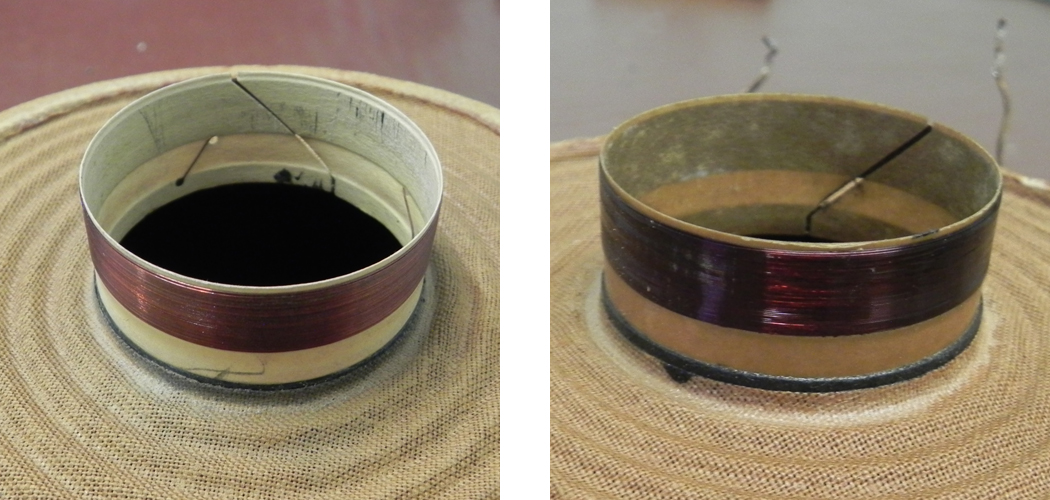
There are subtle sonic differences between the two types of voice coil. The white coil speakers are the most sought after by collectors and discerning tone hunters!
Transition dates
The transition from the white former to the brown former did not happen all at once. It was a gradual transition over several months.
Whilst repairing speakers I have seen the brown formers as early as June 1967, and I have seen the white formers as late as Jan 1968. However, most speakers do seem to have the brown former by Nov 1967, and a white former as late as Jan 68 is pretty rare – I have only seen one example.
Label transition
Even more confusing, the labels did not change “with” the voice coils. Celestion only altered the labels several months later – around April 1968. So there was a long transition period when the speakers had the ‘5w more’ brown voice coil, but they still carried the older ‘5w less’ labels.

So when buying speakers just be careful of this. Dealers will always ask a premium if they have the ‘5w less’ label on them (20w G12M or 25w G12H). However, if they have the brown voice coil former they are really no different to the later pre-rola’s except for the slightly different cork gasket.
To be 100% sure of a white voice coil, the speaker ideally needs to have been made before June 1967. Early greenbacks from that period are particularly rare due to lower production numbers. That is one of the reasons why they are more valuable to collectors.
Identification
25w G12H vs 30w G12H
On G12H speakers look for doping on the reverse side of the cone. This is usually a good indication the speaker has the white voice coil former. A G12H without the reverse side doping is most likely a brown former speaker – a 30 watter.

20 watt G12M vs 25 watt G12M
Sonic differences aside, there are no visual clues on the G12M speakers to determine what type of voice coil it has, without dismantling the speaker. This is definitely not advisable unless the speaker needs repairing. Some people have suggested using a strong flashlight to look through the dust cap. I have not tried this myself yet, but apparently it works so long as the dust cap is not too clogged with dirt.
Wiring and Polarity
Some new information has also come to light regarding the wiring of the voice coils and polarity of the magnets. Thanks to research undertaken by Michele Bisignano and Maurizio Montani in Italy.
It appears that the white voice coils are wired in such a way that requires the magnet to be in south polarity. The later brown voice coils require the magnet in north polarity.
You can check this using a small magnet on the back of the speaker.
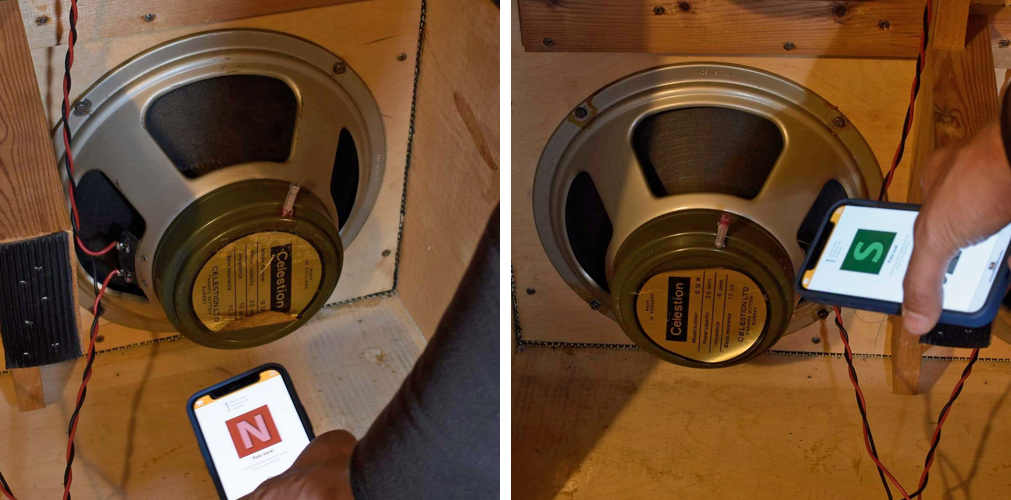
*photos courtesy of Michele Bisignano*
So far I have only tried this on a handful of speakers myself and it does seem to check out. However, I would like to try it on a good few more speakers from the transitional period (late 67) to confirm it fully.
Sonic differences
The speakers with the white coil formers are the best sounding greenbacks Celestion have ever made in my opinion. They sound clearer, have better note definition, feel more responsive, and have that ‘woody’ tone in spades.
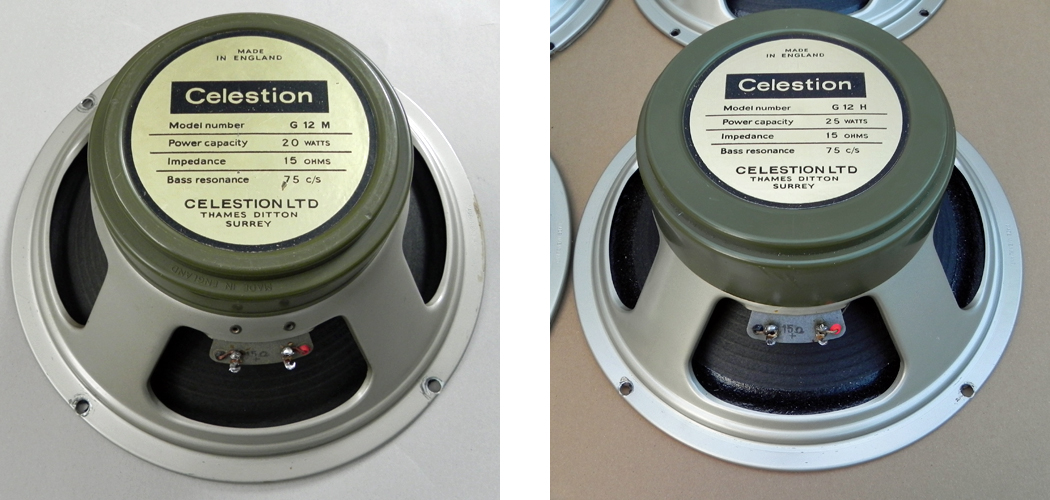
If you are a ‘plug straight in’ kind of guy, then you will probably love the white former period greenbacks too. Just be careful with them. The key to getting the best tone from them is to give them plenty of power. It can be a fine line between ‘optimum tone’ and blowing the speaker!
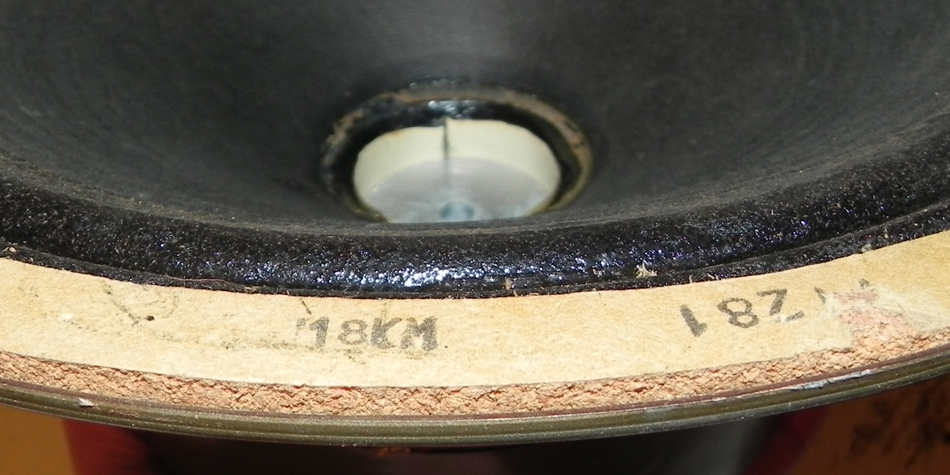
The brown coil speakers will give a warmer and thicker sound at lower volume levels and do not need to be pushed as hard to sound at their best. However, they lose some of the magic of the earlier speakers in my opinion. If you use a lot of distortion or other effects then you will probably prefer these later speakers.
Ultimately, the type of greenback you prefer will come down to personal taste, your playing style, and the other elements of your rig. Use your ears and keep experimenting!

Hi Brian!
Great info here! I have a spring-ish ’68 bottom cab, basketweave with skinny handles and what I believe to have original speakers (date codes 6/68. The labels on the greenback covers say 20 watts, but there are traces of glue over the number ’20’ on all the covers. When I got the cab, there was one tiny gold sticker in the bottom corner of the inside of the cab that said ’25’. Looked like it had been glued on at the factory over the ’20’ and fallen off!
Interesting tidbit just the same…
Author
Hi Michael, glad you like the article. Yes from about April 68 to July 68 Celestion put little ’25’ stickers on the G12M labels, and ’30’ stickers on the G12H. This is how Celestion first showed the increase in power handling. Nowadays those stickers have usually fallen off and can be found floating around in the bottom of the cab somewhere, but the square shaped sticker residue is usually still visible on the label. I guess having new labels made for every speaker model was too much of an expense back then. You can view/read about the label changes in my other blog post here.
regards, Brian
Did this 20w G12Ms also come with 55hz bass cones? Never saw even a picture of one and would really love to know. Cheers, Marko
Author
Hi Marko, yes they exist, but they are rare. The earliest T1511’s (55Hz G12M) I ever saw were made either June / July 1967. I think this is roughly when Celestion first started making them, and when Marshall first started using them instead of Goodmans in their 4×12 bass cabs. I haven’t seen any from 67 myself for a good few years now. June / July 67 would be right on the transition period of the white former to brown former. So whilst you might see T1511 with the 20w labels on them into mid 68, there are probably very few of them around (if any) with the actual white formers.
Brian.
Hi! My father have 4x G12M 20w, former version with the white coil, he thinks they’re from 1966. Do you know roughly the estimated the value of them? And any tips on where to sell?
Thanks in advance and thanks for a great article!
Author
Hi, sorry for the late reply. Their value really depends on their condition, so if you can email me with some photos to info@bygonetones.com I can help you out with a valuation.
regards, Brian.
Hi Brian.
This site is a bunch of valuable information!
Polarity info is very unique.
I’m just sharing my pvc greenbacks info.
South
G12H 25W x2 Apr 66
x2 May 66
Jan 67
North
G12M 20W Aug 67
x2 Dec 67
Author
Hi Tomo, thanks for the additional info. Yes an interesting discovery about the polarity change. They sound like some nice early speakers you have. I would keep hold of them because they are getting very difficult to replace thesedays once sold. What model are your G12H? T1217s?
regards, Brian.
Hi Brian,
Yes, these are all T1217.
Nice compressed tone.
Someday I want to try 25w T1281, but it’s very hard to find though.
Tomo
Author
Hi, yeah I’ve been looking for some early T1281’s myself for a tall B cab. I found some recently in poor condition that will do temporarily, but would like to find a mint original quad. Maybe dreaming thesedays. Should never have sold the ones I had in the past. Brian.
Hi, I want the most inefficient quality speakers for my JTM 45 head. The amp is loud, i want speakers are not as loud, but still sound rich. What do you recommend in this day and age?
Author
Hi, you probably want smaller speakers, either 10″ speakers, or 12″ speakers with a smaller magnet. Maybe try a pair of G12S from the 70’s – model T1417 or T1517 and see what you think. Brian.
What an adventure this is to find out the „truth“….thanks for all that experience you share Brian! I bought a 4×12 cab from 68 the other day and based on all the information here I was able to score an ok price (it is still just a 4×12 cab). Now with the magnet polrity test (and I hope I performed that test coreectly) I found out that the two AA coded speakers had south polarity and the two BA labelened speakers have north polarity…..so I guess although all 4 are labeled as 20Watters I have two 20 and two 25Watters…..all are T1511 btw
Author
Hi Ralf, that sounds like a great cab, and a cool find. 20w T1511 are actually VERY rare speakers. The T1511 only seems to appear in mid 67 in Marshall bass cabs (replacing Goodmans speakers). Then by early 68 they would have the 25w coil. So they would only have been made as 20w for a few months. They don’t come along very often at all. Are you noticing much difference in tone between them? Brian.